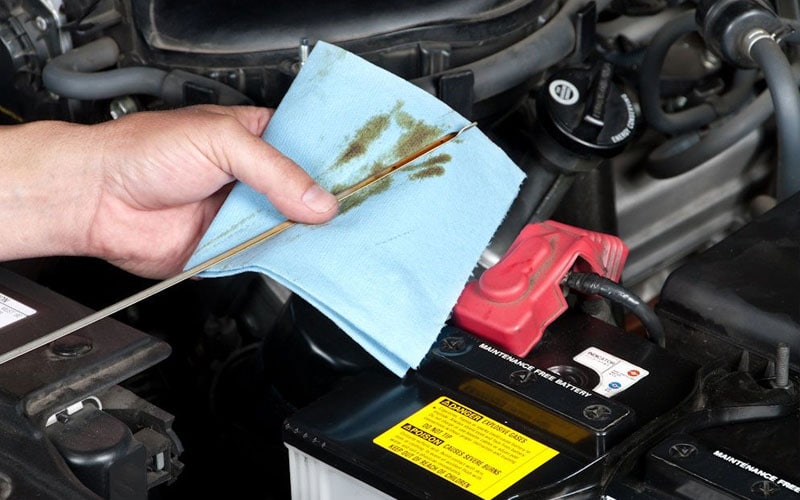
Many novice drivers wonder how often they should change the engine oil in their cars. There is no unambiguous answer to this question. According to service station specialists, the need for such a procedure is determined by a number of circumstances, so for each car, the period between oil changes will be different. Oil, depending on the type of car, can significantly extend the life of any car. In confirmation of this, you can find cars in excellent condition after many years of operation, watching specific models at a car auction. The good news is that almost any driver, even a novice, can change the engine oil. Changing oil filters, however, is a more complicated process. Do they need to be changed on the same schedule as the lubricants? We’ll find out in this article.
Oil Change Recommendations for Novice Drivers
First and foremost, we’ll determine why the engine oil should be changed and how frequently it should be done. If you ask the producers of automotive lubricants and oil filters for advice, they will tell you that it is vital to change the oil in the engine at least once a year for a car that is driven moderately. It is worth noting that in this case, we are talking about vehicles that travel around 9,000 miles each year. It is difficult to say whether this distance is a lot or a little since everything depends on the power of the engine and its wear, as well as the driver’s experience. Most often, even with greater mileage, the motor doesn’t need an oil change, although the opposite also happens. On the other hand, many car owners drive longer distances. Therefore, the vehicle can cover such a “critical” distance in the opinion of the automotive technical fluid producers in a shorter period of time.
The same can be true for driving on city streets, especially if you have to spend a lot of time stuck in traffic. It has a bad impact not only on the engine’s condition but also on the oil in it. If the driver often switches from idle to a fast rise in revs (for example, when they finally get out of a long traffic jam and attempts to accelerate swiftly), engine parts wear out quickly. Furthermore, the oil structure changes as a result of the frictional products of the motor’s moving components. As a result, the lubricant must be replaced more frequently.
How to Choose a Good Engine Oil?
Even if you’ve already been able to roughly orient yourself as to how often you need to change the engine oil, another question arises: which oil to choose? There are many manufacturers of such liquids. And if some of them are famous for their promoted brand, others attract drivers with a more affordable price. Moreover, there are variations in the type of oil, as today you can easily find both synthetic and semi-synthetic lubricants. Most car owners follow advertising, personal experience, or their friends’ advice.
Regarding the choice of lubricant, experts still recommend that you pay attention to the advice of car manufacturers. The fact is that during the vehicle tests, they already selected the oil that is best suited for a specific type of engine. More often than not, you have to overpay a little for such oil, but the motor condition of your car is more valuable, in material terms as well.
A Step-by-Step Description of the Oil Change Process
It’s very important to know that the draining of car oil must be carried out only from a warmed-up engine. It’s executed either immediately after the road, or the motor is especially warmed up to normal operating temperature. After, the entire lubricant change consists of the following stages:
for ease of operation, it’s best to drive the car to a special lift or to an inspection pit;
open the hood and first remove the plug from the oil filler neck of the car engine;
remove the special fender that acts as engine protection;
clean the plug of the oil drain hole, which is located on the engine oil sump;
it’s important to loosen the tightening of the cork;
put a container for draining oil under the hole and twist the plug;
we wait until all the oil flows out of the engine;
it is most convenient to use a watering can or the neck of an ordinary plastic bottle—then the oil will drain faster and more accurately. Be sure to consider that the oil in a warmed-up engine is hot; follow the safety rules so as not to burn yourself;
screw the cork back on.
In fact, after that, you can immediately fill in new oil. However, if it has not been changed for a long time, then additional flushing of the lubrication system is required to optimize engine operation. For this, a special washing oil or the lubricant that you are going to use in the future is poured into the engine. It is not necessary to have a lot of oil; it will be enough if its level rises to the lowest mark on the dipstick. Then start the engine for 10 minutes so that it runs at idle speed.
Tips and Recommendations of Experienced Car Owners
In addition to the above-provided information, we also want to share with you some useful tips that will help to prolong the operation of the engine and make driving more comfortable:
Change the oil filter often. There is no filter that is capable of retaining all the dust and dirt that enters the engine together with the air. Also, a significant part of the pollution gets on it together with the fuel.
Many auto mechanics can advise you to do a vacuum and express motor oil change. Despite all the advantages of such a replacement, a lot of used oil remains in the engine after the operation. That can be avoided with traditional draining.
Avoid different additives in motor oil. In practice, it has been proven that the positive effect of such impurities is short-lived. In general, they only harm the operation of the engine.
Buy only good filters and only the sizes you need. It is not worth saving on them because the worse the filter is, the faster the engine will wear out and the oil will have to be changed more often.
Check the engine oil level. If it is too little, the parts will wear out very quickly. With an excess of oil, the entire car mechanism will also suffer.
Following these simple instructions will help to improve the operation of the car and make driving safe. Do not be lazy about paying attention to your vehicle, because you trust your life and the lives of your passengers to it almost every day.







